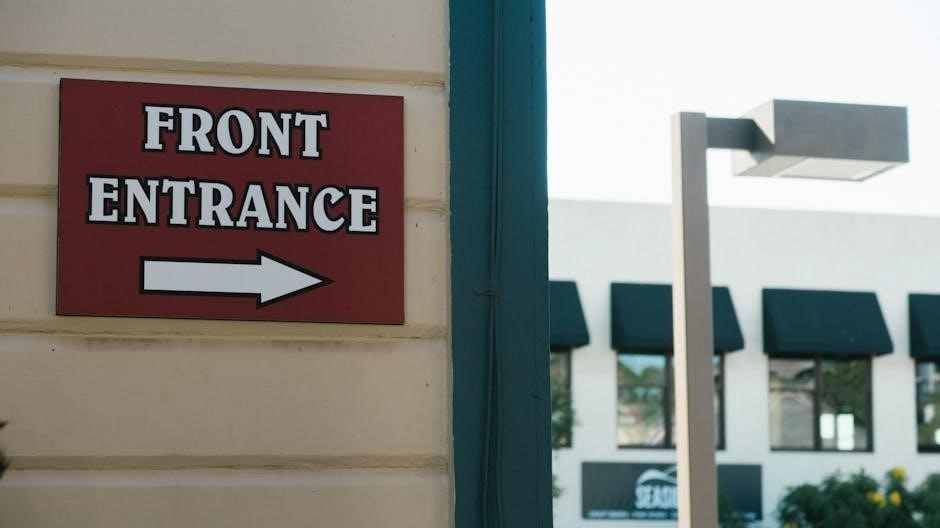Subaru warning lights are crucial for safety and performance. They indicate potential issues early, helping you avoid costly repairs. This guide explains common lights, ensuring timely attention to keep your Subaru running smoothly.
Overview of Subaru Reliability and Common Warning Lights
Subaru is renowned for its reliability, with an overall rating of 3/5 and ranking 14th among 32 car brands, according to RepairPal. The average annual repair cost is $617, slightly below the industry average of $652. This makes Subaru a dependable choice for drivers seeking durable vehicles with fewer frequent repairs. However, like any car, Subarus can experience issues, often indicated by warning lights on the dashboard. Common lights include the ABS Warning Light, which signals anti-lock braking system problems, and the Oil Pressure Warning Light, indicating low oil pressure. These lights are designed to alert drivers early, preventing minor issues from becoming costly problems. Understanding these indicators is essential for maintaining your Subaru’s performance and ensuring safety on the road. Regular monitoring and prompt attention to dashboard warnings can help preserve your vehicle’s reliability and longevity.

Common Subaru Warning Lights and Their Meanings
Subaru dashboard warning lights alert drivers to potential issues. Common lights include ABS, Check Engine, and Oil Pressure indicators. Understanding these symbols is crucial for maintaining safety and performance.
Check Engine Warning Light: Causes and Solutions
The Check Engine warning light is one of the most common indicators in Subaru vehicles. It illuminates when the engine computer detects a problem with the emissions system or engine performance. Common causes include a loose gas cap, faulty oxygen sensor, or issues with the catalytic converter. Ignoring this light can lead to reduced fuel efficiency, increased emissions, and potentially costly repairs. If the light is solid, it indicates a minor issue that should be addressed soon. However, if it blinks, it signals a more severe problem that requires immediate attention to prevent engine damage. Solutions involve diagnosing the issue using a code reader, tightening the gas cap, or replacing faulty components. Consulting a professional mechanic is recommended for accurate diagnosis and repairs to ensure your Subaru runs efficiently and safely.
ABS Warning Light: Understanding Anti-Lock Braking System Issues

The ABS warning light illuminates when there is a problem with your Subaru’s Anti-Lock Braking System. This system prevents wheel lock-up during hard braking, ensuring better control and safety. If the light comes on, it could indicate issues with ABS sensors, wiring, or the control module. Driving with an active ABS warning light is unsafe, as it disables anti-lock braking, increasing the risk of skidding. Common causes include dirty or faulty wheel speed sensors, damaged wiring, or low battery voltage. Ignoring this light can lead to further complications, such as reduced braking performance or even system failure. It’s essential to have the issue diagnosed by a professional mechanic to restore your vehicle’s safety features. Addressing ABS issues promptly ensures reliable braking and enhances overall road safety.
Oil Pressure Warning Light: Indicators and Maintenance Tips
The oil pressure warning light is a critical indicator in your Subaru. It illuminates when the engine oil pressure drops below a safe level, which can cause serious damage if ignored. Low oil levels, a faulty oil pressure sensor, or a malfunctioning oil pump are common causes. If the light comes on, pull over safely and check the oil level using the dipstick or electronic gauge. Adding oil if necessary may resolve the issue temporarily, but it’s essential to address the root cause to prevent engine damage. Regular oil changes, using the correct viscosity oil, and inspecting for leaks can help maintain proper oil pressure. Ignoring this warning can lead to premature wear on engine components, potentially resulting in costly repairs. Always consult your Subaru manual or a certified mechanic for accurate diagnosis and maintenance advice to ensure your engine runs smoothly and lasts longer.

Diagnosing Subaru Dashboard Warning Lights
Diagnosing Subaru dashboard warning lights involves understanding their colors and symbols. Red indicates urgent issues, while yellow or blue may signal less critical problems. Always consult your manual or a certified Subaru technician for accurate assessments and solutions to ensure your vehicle operates safely and efficiently.
How to Identify and Understand Different Warning Light Colors
Subaru dashboard warning lights use distinct colors to signal the severity of an issue. Red lights indicate urgent problems, such as engine overheating or low oil pressure, requiring immediate attention. Yellow or orange lights suggest less critical issues, like a loose gas cap or faulty sensor, but still need prompt resolution. Blue lights often relate to driver-assistance systems, such as cruise control or lane-keeping assist. Green lights typically indicate a feature is active, like high beams or eco-mode. Blinking lights usually signal urgency, while steady lights mean the system is monitoring a condition. Understanding these colors helps drivers respond appropriately and prioritize repairs. Always consult your Subaru owner’s manual or a certified technician for precise interpretations and solutions to ensure your vehicle remains safe and operational.
Resetting Subaru Dashboard Warning Lights: A Step-by-Step Guide
Resetting Subaru dashboard warning lights is a straightforward process that can be done after addressing the underlying issue. Start by ensuring the problem has been fixed by a certified technician or through DIY repairs. Next, turn the ignition to the “ON” position but do not start the engine. Locate the trip reset button, usually found on the odometer, and press and hold it until the odometer displays “000000.” While holding the button, turn the ignition to the “OFF” position and release the button. Wait a few seconds, then restart the engine to see if the light has cleared. If this method doesn’t work, try disconnecting the battery for 10-15 minutes to reset the system. For newer models, an OBD-II scanner can also be used to clear codes. Always consult your Subaru owner’s manual for specific instructions, as procedures may vary by model year. If the light persists, seek professional assistance to avoid further complications.

Importance of Addressing Subaru Warning Lights
Addressing Subaru warning lights is crucial for safety, as ignoring them can lead to severe damage or accidents. Timely action prevents costly repairs and ensures optimal vehicle performance and reliability over time.
Safety Implications of Ignoring Dashboard Warnings
Ignoring Subaru dashboard warning lights can have serious safety consequences. These lights are designed to alert drivers of potential issues that could lead to system failures or accidents if left unaddressed. For instance, the ABS warning light indicates a problem with the anti-lock braking system, which is critical for maintaining control during sudden stops. Similarly, ignoring the oil pressure warning light can lead to engine damage, potentially causing a breakdown while driving. Overlooking these alerts can also result in more severe accidents, especially in hazardous driving conditions. It’s essential to respond promptly to dashboard warnings to ensure your safety and the safety of others on the road. Regular checks and timely repairs can prevent such risks and maintain your vehicle’s reliability. Always refer to your Subaru’s manual or consult a professional to address these issues immediately.
Regular Maintenance to Prevent Warning Light Activation
Regular maintenance is key to preventing Subaru warning lights from illuminating. By staying on top of routine checks, such as oil changes, tire pressure monitoring, and brake inspections, you can avoid many issues that trigger dashboard alerts. Ensuring proper fluid levels, cleaning sensors, and replacing worn components like air filters can also prevent warning lights. Additionally, keeping your battery in good condition and checking for loose connections can avoid system malfunctions. It’s important to follow the schedule outlined in your Subaru owner’s manual for services like timing belt replacements and spark plug changes. Neglecting these tasks can lead to costly repairs and safety risks. Regular maintenance not only prevents warning lights but also ensures your Subaru runs efficiently and safely. By being proactive, you can minimize unexpected issues and keep your vehicle in optimal condition.
